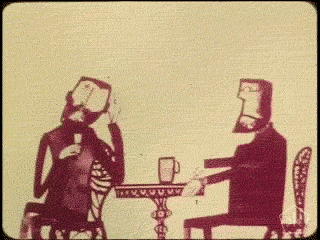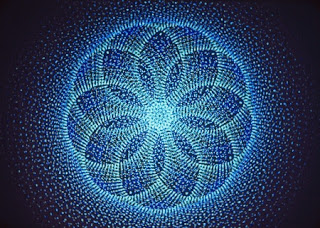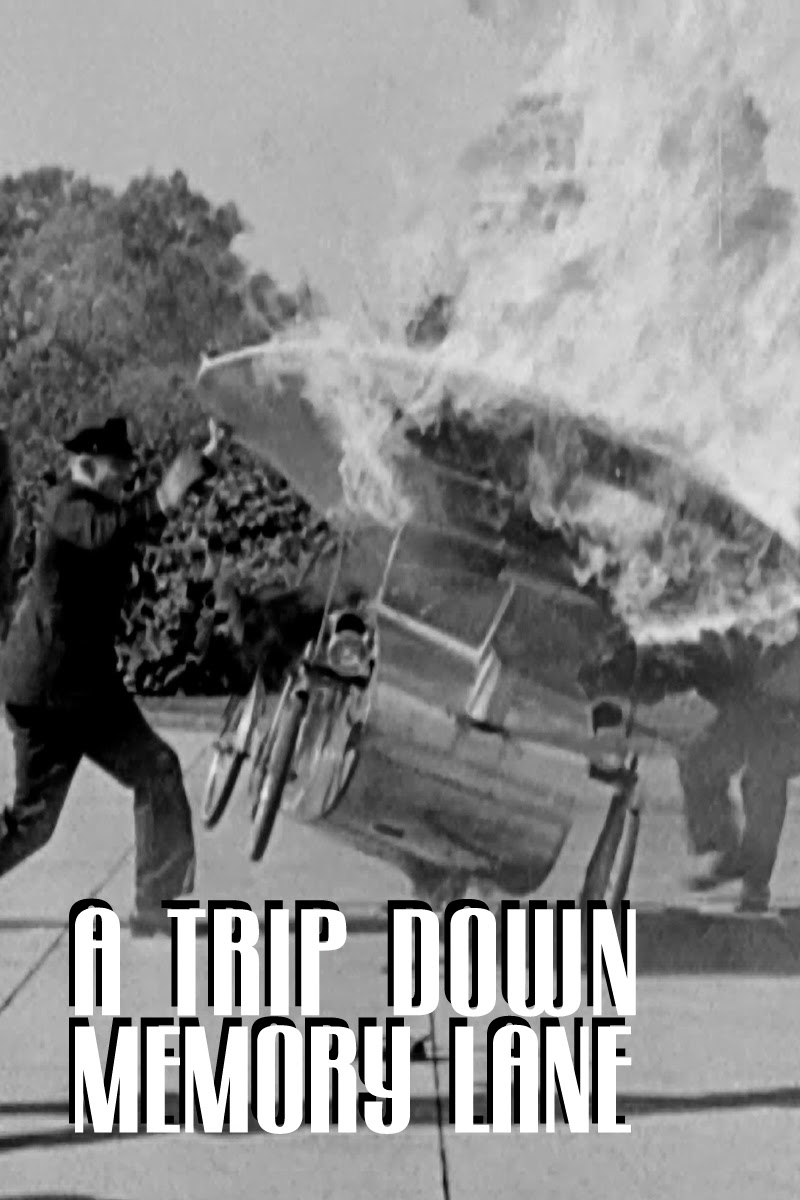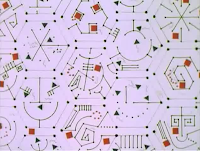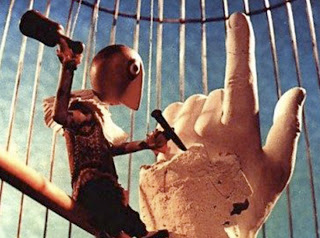Oddball Films presents Film Capsule 1965 - Groundbreaking Cinema Half a Century Later with a selection of some of the most fascinating, award-winning, visionary and mind-blowing shorts from 50 years ago. This multi-genred program includes insightful documentaries, innovative animation and transformative avant-garde works, all made in 1965. Polish artist Jan Lenica's hip animated reimagining of Ionesco's Rhinoceros (1965) paints an absurd picture of the dangers of conformity. Buck Dancer (1965) is acclaimed ethnomusicologist Bess Lomax-Hawes' mesmerizing musical artifact featuring Mississippi fife player/buck dancer Ed Young. A Glittering Song (1965) turns trash into treasure by animating a sparkling world entirely out of broken glass. Lapis (1965) made by a spiritualized James Whitney (one of only 7 films he created) and one of the most accessible "experimental films" ever made. Arthur Lipsett gives us the rise and fall of a global technocracy in his wryly crafted A Trip Down Memory Lane (1965). In Time Piece , master puppeteer Jim H*nson crafts a zany self-portrait of a man in crisis. Animated short Flatland takes place in a world that only has two dimensions and a strict social code; when a three dimensional sphere enters the picture, the laws of the universe begin to fall apart. Jiří Trnka's haunting stop-motion puppet parable The Hand presents a sculptor oppressed and manipulated by a giant disembodied hand. The National Film Board of Canada fights smoking with groovy psychedelic animation in the Oscar-nominated The Drag. So come ring in the new year with fascinating films that turn fifty this year.
Rhinoceros (Dir. Jan Lenica, Color, 1965)
Filmmaker and multitalented artist Jan Lenica's checkered career has encompassed excursions into music, architecture, poster-making, costume design, children's book illustration, and all aspects of filmmaking. It is, however, for his animation that he is best known, particularly his collage and "cutout" films, which have their roots in the art of Max Ernst and John Heartfield. The films have influenced the work of Jan Švankmajer and Terry Gilliam.
In this film, Polish master Lenica utilizes cutouts creating an animated adaptation of Eugene Ionesco’s brilliant play about the oppressive and manipulative power of conformity.
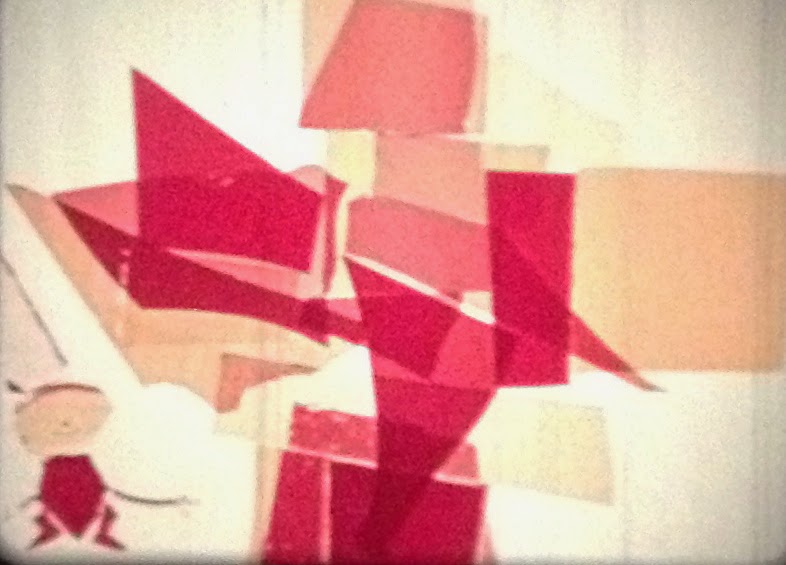 Glittering Song (Color, 1965, Vaclav Bedrich)
Glittering Song (Color, 1965, Vaclav Bedrich)
A beautifully whimsical object animation that brings to life discarded shards of broken glass, transforming the dangerous trash into a sparkling magical world of a little boy and his colorful imagination.
Lapis (Color, 1965)
This film, by film pioneer James Whitney consists entirely of dot patterns. Like a single mandala moving within itself, the particles surge around each other in constant metamorphosis, a serene ecstasy of what Jung calls "individuation." For 10 minutes, a succession of beautiful designs grows incredibly, ever more intricate and astounding; sometimes the black background itself becomes the pattern, when paths are shunned by the moving dots. A voluptuous raga soundtrack by Ravi Shankar perfectly matches the film's flow, and helped to make LAPIS one of the most accessible "experimental films" ever made.
The images were all created with handmade cels, and the rotation of more than one of these cels creates some of the movements. John Whitney Sr. had built a pioneer computerized animation set-up—the prototype for the motion-control systems that later made possible such special effects as the "Star Gate" sequence of 2001. James used that set-up to shoot some of his handmade artwork, since it could ensure accuracy of placement and incremental movement.
A Trip Down Memory Lane (B+W, 1965)
The brilliant and troubled Arthur Lipsett created this experimental montage with over 50 years worth of found sound and newsreel footage with everything from beauty pageants to military propaganda to Richard Nixon. The jarring juxtaposition of images create a landscape of the rising technocracy that has only escalated in the decades since. Lipsett wrote about the themes of the film “as science grows, religious belief seems to have diminished... The new machines (of every description) are now invested with spiritual qualities. They have become ritualistic implements.”
Rare portrait of an African American buck dancer and fife player who briefly performs on the steps of his home in rural Mississippi. The film was made by Bess Lomax-Hawes, the sister of the great American ethnomusicologist Alan Lomax.
This short film, adapted from Edwin Abbott’s 1884 novel of the same name, tells the story of a world that only exists in two dimensions. Told from the perspective of a square, the film provides a tour of 2D society, and the chaos that ensues when a three-dimensional sphere makes a visit. This visually stimulating, and at times psychedelic, short was made in the first years of the animation program at Harvard’s Visual Arts Center, and is narrated by Dudley Moore.
Time Piece (Color, 1965)
This Oscar-nominated live-action short from M*ppets creator Jim H*nson is a rare
treat, perhaps just for adults. Starring the young H*nson himself, a hospitalized man is sent through the ringer in this absurd commentary on modernity lost to money, sex, food, industry, and most of all, time. Drawing on his prowess as puppeteer, H*nson crafts this surreal, racy, quick-cutting gem.
The Hand (Color, 1965)
This is Jiri Trnka’s last, and many say his best work. “The Hand” is an allegorical take on the Stalinist Czech dictatorial regime. Trnka directed some of the most acclaimed animated films ever made. In 1966, four years before his death, Newsday lauded him as "second to Chaplin as a film artist because his work inaugurated a new stage in a medium long dominated by Disney." Trnka, was a 1936 graduate of Prague's School of Arts and Crafts. In 1945 he set up an animation unit with several collaborators at the Prague film studio; they called the unit "Trick Brothers." Trnka specialized in puppet animation, a traditional Czech art form, of which he became the undisputed master. He also created animated cartoons, but it was his puppet animation that made him an internationally recognized artist and the winner of film festival awards at Venice and elsewhere. His films are brilliant, bizarre and meticulously rendered.
The Drag (Color, 1965)
Produced for the Canadian Department of Health and Welfare this jaw-dropping film montage depicts the difficulty of breaking the tobacco habit in a child-adulthood go-go frenzy of wild animation by Italian animator Carlos Marchiori. The story depicts the case history of a chain smoker-satirically told on a psychiatrist's couch, with the patient's recollections--illustrating the psychology of the smoking habit and the part that cigarette advertising plays in the addiction. With hopping music and brilliant kaleidoscopic montages.



